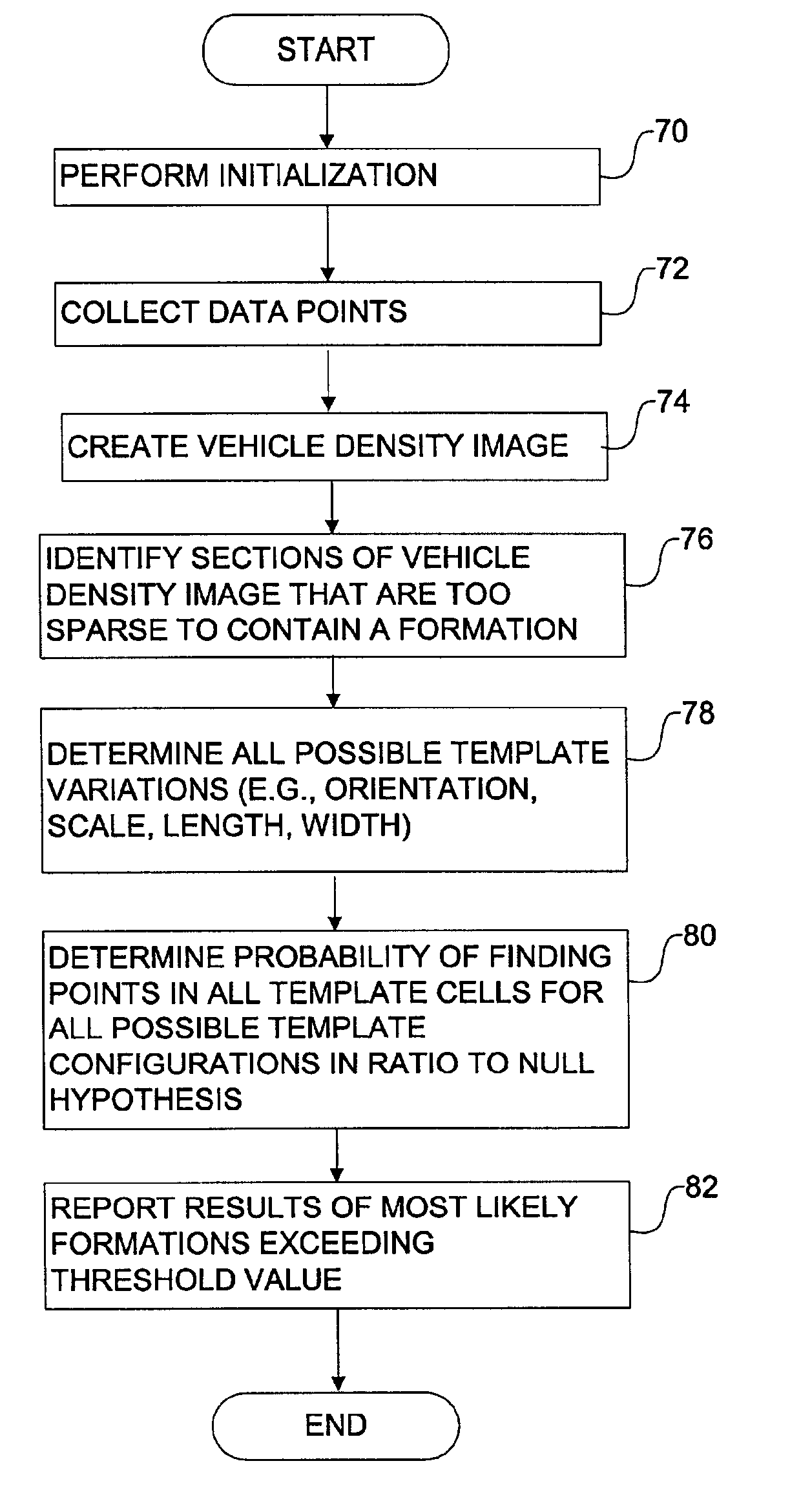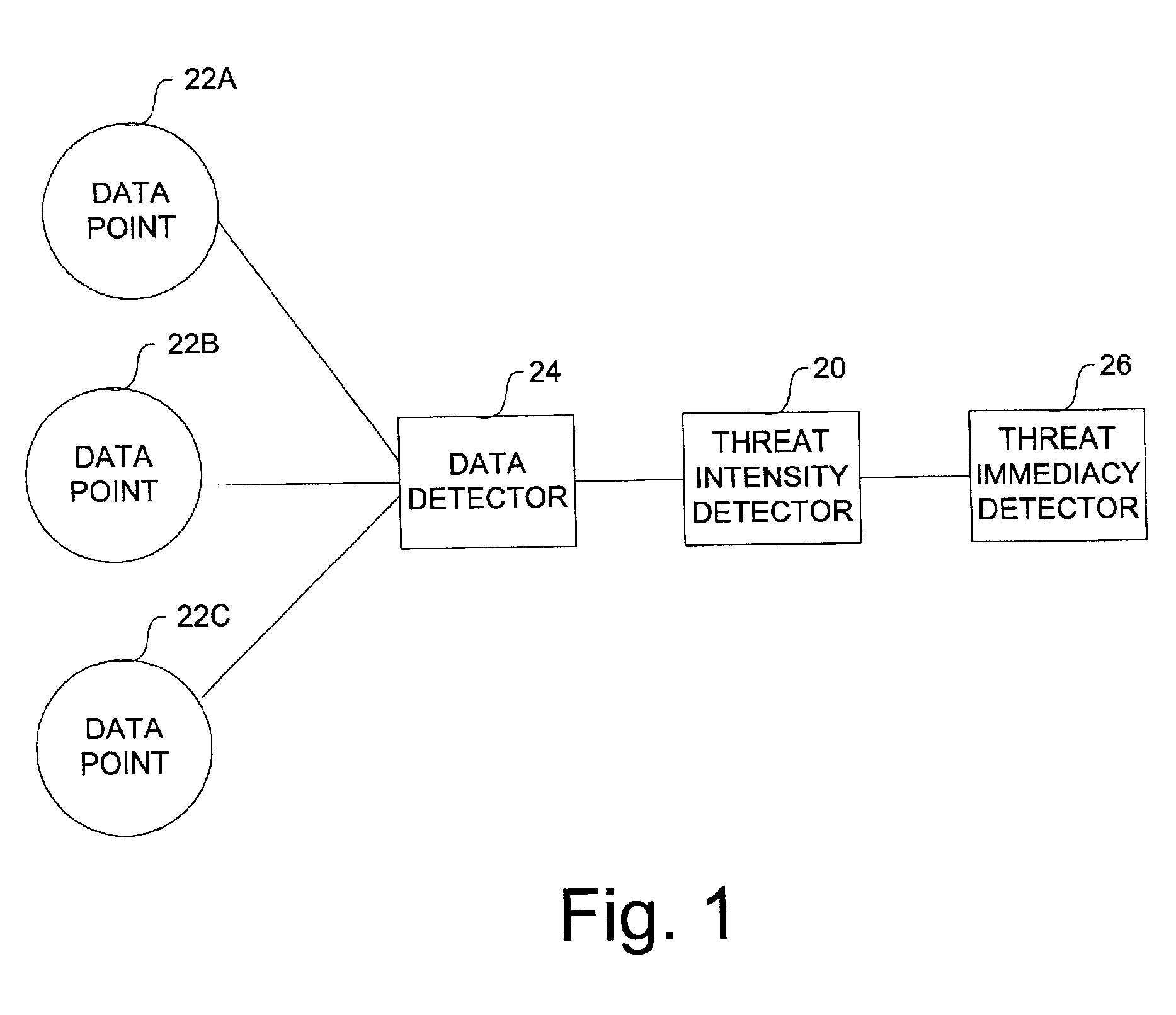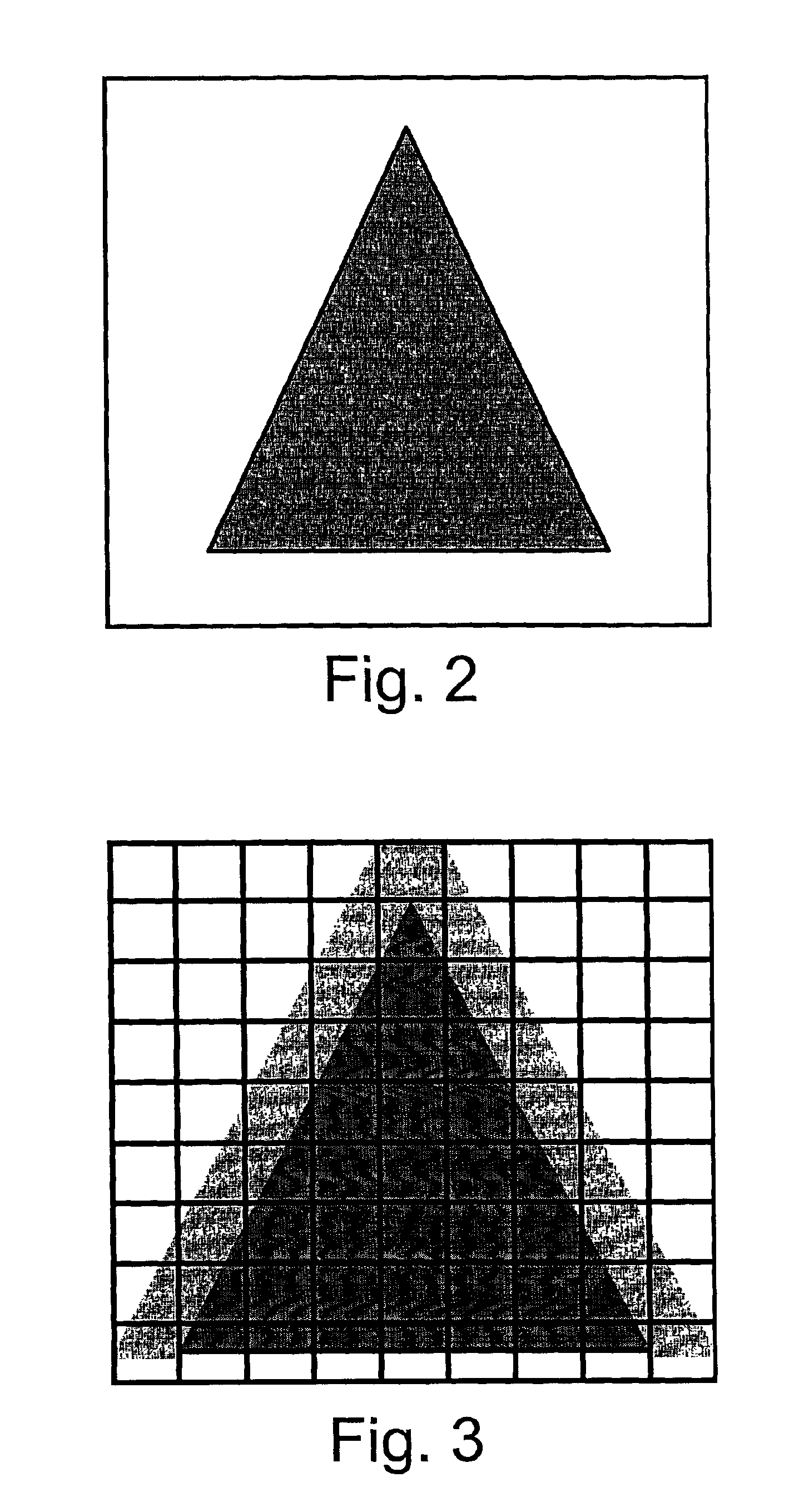System and method for automatic recognition of formations in moving target indication data
a technology of automatic recognition and indication data, applied in the field of moving targets, can solve the problems of difficult identification of formations by image analysts in such a dynamic display
- Summary
- Abstract
- Description
- Claims
- Application Information
AI Technical Summary
Benefits of technology
Problems solved by technology
Method used
Image
Examples
Embodiment Construction
[0029]The present invention has an explicit data model and uses Bayesian estimation. It utilizes range-rate data to improve the estimate and it estimates geometry directly rather than relying upon inference based upon indirect filter responses to estimate geometry. Thus, it is more easily extensible to a much broader range of geometries than prior art systems. The present invention uses templates to represent formations as described in detail below.
[0030]FIG. 1 is a block diagram of the major components of an exemplary system for performing automatic recognition of formations in moving target indiction data formed in accordance with the present invention. Data is detected and collected from various data points 22A, 22B and 22C by a data detector 24. For example, data points 22A, 22B and 22C may be locations of ground based moving targets and the data detector 24 may be a military system with a moving target data collection capability, for example an aerial surveilance system. The da...
PUM
 Login to View More
Login to View More Abstract
Description
Claims
Application Information
 Login to View More
Login to View More - R&D
- Intellectual Property
- Life Sciences
- Materials
- Tech Scout
- Unparalleled Data Quality
- Higher Quality Content
- 60% Fewer Hallucinations
Browse by: Latest US Patents, China's latest patents, Technical Efficacy Thesaurus, Application Domain, Technology Topic, Popular Technical Reports.
© 2025 PatSnap. All rights reserved.Legal|Privacy policy|Modern Slavery Act Transparency Statement|Sitemap|About US| Contact US: help@patsnap.com



